This dance exhibition explores the developmental movement patterns of children but displays them regressing from age six to newborn to represent the adverse effects of lead poisoning on children’s development. The site for filming is an elementary school playground in Mattapan: a neighborhood which has the overlapping characteristics of both a high lead paint indicator (high percent of houses built before the 1960’s, when lead paint was still used) and a high population under 5 years old. Mattapan is one neighborhood among a cluster of suburbs south of Boston which have drawn many immigrants from Haiti, Cape Verde, and Vietnam. The historical city of Boston has many old houses built before 1978, when lead paint was used. Lead poisoning has a disproportionate effect on children because their brains do not yet have a barrier between the blood and the brain, so lead can more easily cross over (Hou). This is especially dangerous as children’s nervous systems are still developing. Children also have a greater risk of exposure because of their behaviors of crawling and putting objects in their mouths. The playful nature of the music mimics the playful situations in which children are most likely to inhale lead from chipping paint or from leaded gasoline in the soil. However, the music also has foreboding undertones and lyrics: this is meant to show the juxtaposition of the innocence of childhood with the dangers of lead. Interspersed recordings of colorful houses stream past, collected from neighborhoods in Mattapan and Dorchester, and display various conditions of paint or vinyl siding—a common and quick solution for simply covering over lead paint (mass.gov). Families in the suburbs south of Boston are at a high risk of exposure to lead paint and their status as a high percentage minority population could impact their ability to protect their children.
Hou, Shuangxing et al. “A clinical study of the effects of lead poisoning on the intelligence and neurobehavioral abilities of children.” Theoretical biology & medical modelling vol. 10 13. 18 Feb. 2013, doi:10.1186/1742-4682-10-13
Massachusetts Government, Childhood Lead Poisoning Prevention Program. “Learn about low-risk deleading,” https://www.mass.gov/service-details/learn-about-low-risk-deleading
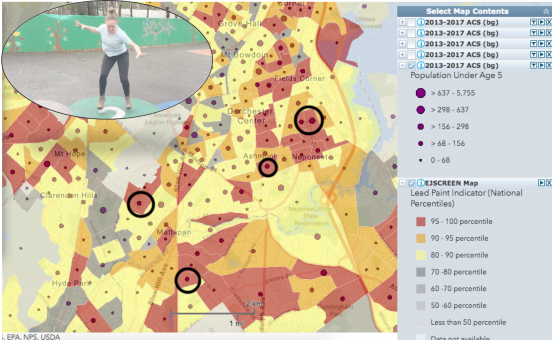
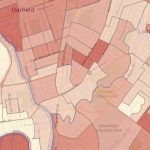
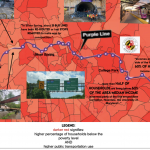
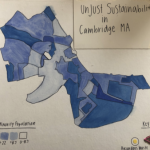
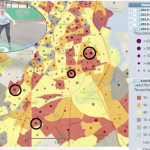
Erin Crawley-Woods
April 30, 2020 — 11:36 pm
Brava, Natalie! You fully embodied the playfulness and precariousness of the developmental movement patterns. Seeing them in regression along with the shots of the houses and playground is quite effective. Well-chosen music too! The credits rolled by before I could see who it is by – who is it?!
Natalie
May 1, 2020 — 5:30 pm
Thank you! It was fun to integrate what I was learning in classes side-by-side!
The music is by Cosmo Sheldrake. I used snippets of two songs: “Come Along” and “Linger Longer”
parsonsa
May 1, 2020 — 5:26 pm
This is a beautiful visual! The dance is a unique art form to choose, and it certainly worked well for your topic.
N
May 1, 2020 — 5:29 pm
Thank you!
Kathryn
May 1, 2020 — 5:31 pm
The thoughtfulness and expression represented in your dance and your visual as a whole is really impressive. Including the photos of the houses in the area that are likely the cause of lead poisoning was also a really interesting and important touch, and really humanizes (as all of your video does) the issue of lead poisoning. How did you decide specifically the way that you wanted to dance to represent this issue?
meltmarr
May 1, 2020 — 5:31 pm
I love the choreography, how long did it take to plan and create the choreography for your dance?
MR
May 1, 2020 — 5:34 pm
Great job with such an interesting and interpretive representation of your environmental bad through the dance! Being able to convey your bad through a dance is not easy but you did a great job!
Claudia
May 1, 2020 — 5:34 pm
Natalie I really enjoyed your dance video and thought it captured the spirit of children artfully as well as the horror of the lead poisoning that young children are enduring. Are the people of Mattapan aware of this injustice and are they trying to fight it?
Natalie
May 1, 2020 — 5:37 pm
Claudia,
Good question, I am curious to know more on this myself. I have heard more about the efforts in Dorchester, the next town over, to combat lead poisoning. One effort implemented low cost gardening renovations to guard against lead in the soil.
ketchumt
May 1, 2020 — 5:35 pm
This was a super cool and creative way to show and symbolize your environmental bad! The dance along with the maps and a description paragraph combine for a good mixture of interesting symbolism while also teaching the reader more about your bad!
Natalie
May 1, 2020 — 5:35 pm
Thank you!
To answer Kathryn and meltmarr,
My movements were inspired by what I was learning in my dance anatomy class. We were studying children’s developmental patterns, which I thought would be perfect! I first planned out the order of my movements based on an activity in our anatomy textbook, filmed that, and reviewed it. Then on site, we took one shot which I realized could be better, so then we filmed another improvised sequence.
MR
May 1, 2020 — 5:36 pm
Great Job showing your environmental bad through a dance! that is something that is not easy to do but you did a great job!
RM
May 1, 2020 — 5:38 pm
This was an impressive feat to use aspects of two classes, of completely different disciplines, to help support the point you are trying to make. Your dance video was beautiful and the exhibit note holds informative information and explanations. I think it was interesting to see the regression in age from age 6-0 and makes me curious of the effects of lead poisoning as a child gets even older.
Nat
May 1, 2020 — 6:16 pm
Thank you!
That is a really good question! I would be curious to research that more as well.
BSL
May 1, 2020 — 5:42 pm
I loved your creative interpretation and ability to adapt when technology hiccups were encountered. Kudos!
Nat
May 1, 2020 — 6:15 pm
Thank you!
Emily F
May 1, 2020 — 5:43 pm
Beautiful work Nat!
I love the imagery of skipping backwards over the numbers as you progress back through the phases of childhood development. I agree the music really adds to the video; both to the urgency of the issue as well as the eery lack of general public interest in the negative effects of lead exposure in children.
Great job. 🙂
Allison Acevedo
May 1, 2020 — 5:46 pm
Hi I really liked this project. I have not considered any linkages between performing arts and environmental issues. The performance really helped me visualize the work and understand the environmental components. Thank you for the opportunity to see this cross-disciplinary project.
Nat
May 1, 2020 — 6:19 pm
Thank you! I hope you may start to find many other links between the performing arts and the environment! I know Dickinson’s choir did a beautiful job of this last semester, and my friends in the dance department have performed pieces on Climate Change in previous years. It’s fun to find those interdisciplinary explorations!
Anna
May 1, 2020 — 5:46 pm
This is an incredibly interesting and creative way to symbolize lead exposure on children. You clearly put lots of effort and hard work into making this project and it turned out really well. Amazing way to merge skills learned in your old dance class with topics from this class.
gamzan
May 1, 2020 — 5:49 pm
I think it’s really important that you specifically focused on the children impacted by this lead exposure. As we’ve seen throughout the semester issues of representation and voice are often intertwined with env bads, and children are being affected by this specific issue as well.
Hiba
May 1, 2020 — 5:49 pm
Amazing for the choice of medium for this project it’s very creative! I really like how you used knowledge from other classes in child development and tied it together with unjust sustainabilities learned from this class to produce this choreography
Kristin
May 1, 2020 — 6:03 pm
I can’t seem to see the video!! Any other place to access it? Love this as a visualization for such a serious issue for children.
Nat
May 1, 2020 — 6:14 pm
Here’s my uploaded video on YouTube which you can watch!
https://www.youtube.com/watch?v=y4N18thBZbo
bascolot
May 1, 2020 — 6:09 pm
Hey Grace,
I loved both the idea of your project as well as your video!
I am so grateful that you chose this specific topic that I would have never thought of, but yet is so important. As an education lover, I think that studying the effects that this paint might have on children is so important! The fact that you actually thought of this and went through with it means a lot to me. I do appreciate your researcher very deeply.
Best! 🙂